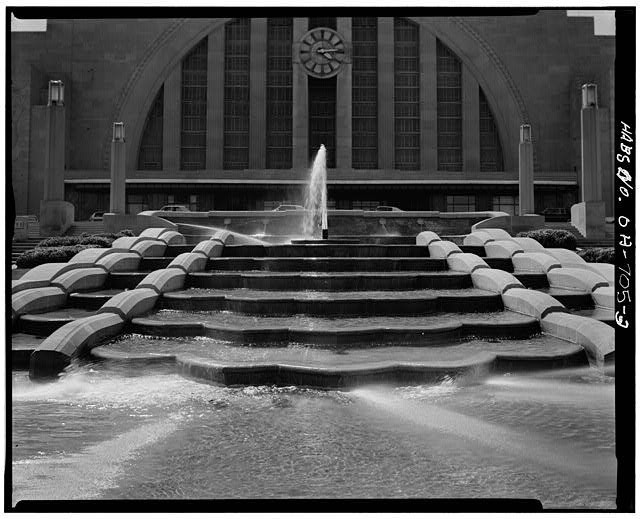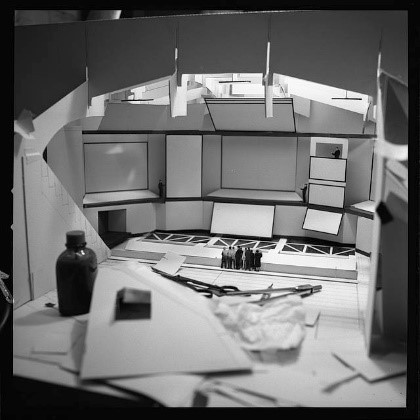
Digital literacy is not a topic architects usually consider. For Aliza Leventhal, Head of the Technical Services Section, Prints & Photographs Division at the Library of Congress, the processes of literacy and design go hand-in-hand. Previously the corporate librarian and archivist for Sasaki, Aliza is leading national conversations on everything from born-digital design files and archiving to institutional memory and knowledge sharing. Today, she's working with architects and designers to reimagine digital workflows for future access and ideation.

The co-founder of the Society of American Archivist's Digital Design Records Taskforce, Aliza has written extensively on archival concerns and approaches for collections containing born-digital design files. As a resource to both designers and archivists alike, she's working to lower the barriers for engaging with digital design records and considering their impact. In an interview with ArchDaily, she discusses her inspirations and career at The Library, as well as trends in born-digital design records and digital literacy.
You studied Economics and American Studies, and have both a MLIS and an MA in history. Why did you decide to study these fields?
Learning has always been about making connections, synthesizing information, seeking many perspectives, and generally embracing my seemingly insatiable curiosity.
In undergrad I was drawn to Economics as a framework for understanding the push and pull factors that explain so much of our current socio-political landscape. The opportunity to apply math in attempts to identify patterns or breakdown complex concepts balanced with the ubiquitous answer of “it depends” allowed me to ask tough questions and embrace the unknown. American Studies provided outlets to explore a myriad of disciplines ranging from science, music, literature, history, government, media, and art as part of one course of study. The pedagogy of American Studies emphasized the need for multiple perspectives and voices and calls out the palimpsest contained with any type of record.
I simultaneously earned my MLIS and MA in History through the archives management program at Simmons College. The combination of archival theory and practice with historiography seemed like the best approach to understanding the creation and support of collective memory.


You were previously the corporate librarian and archivist for Sasaki. How was that role structured, and how can other firms learn from this model?
I had the privilege of being Sasaki’s first archivist and was given a lot of opportunity to shape the role. Together we were able to show the many benefits of having an in-house archivist.
My responsibilities ranged from records management and collection processing to maintenance for both physical and digital records, and developing a knowledge management program. While each corporate archivist has a unique set of challenges, we all benefit from fostering collaboration and open dialogues with IT and marketing colleagues as well as with the designers themselves. Staying abreast of the design practitioners’ workflows and the changing landscape of design software was critical in developing preventative measures for saving and providing future access to born-digital design records. I sought out opportunities to raise awareness and build institutional memory of the firm’s 65 years of work through a couple of exhibitions in the firm’s gallery, implemented a digital asset management system, and developed a comprehensive database of the firm’s project work.

While at Sasaki, I also developed a community of corporate architectural archivists and knowledge managers. Each firm had a slightly different take on the archivist role with some archivists positioned in marketing departments and others in IT. Several firms hired archivists as part of their agreement to donate their records to a collecting institution, and others created the position to support internal records or knowledge management efforts. Regardless of the motivation or organizational structure, we were almost all the only archivist at our firms and shared similar challenges of keeping up with the changes in design practices and managing diverse and unwieldy collections of physical and digital records. Creating and maintaining the knowledge systems saves time and money in the long run.

You’re currently Head of Technical Services for the Prints & Photographs Division of the Library of Congress. What is your day-to-day like, and the central focus of your work?
Technical Services for the Prints & Photographs Division includes archival processing, cataloging, and digitization. These three areas collaborate to provide access to our collections’ 16.5 million items. We are currently undertaking a robust processing program for a backlog of collections. This requires a lot of project planning, coordination, and effective communication. The day-to-day always varies but usually comprises quite a few meetings ranging in topics from processing plans and metadata practices to collection moves and staff check-ins. It is a great combination of problem solving, policy development, long-term planning, and staff development. I am so lucky to get to support and work with an incredible staff of experts who thoughtfully approach each collection. I also get to enjoy daily discoveries in our collections. To that end, I strongly encourage everyone to take a moment and peruse the Prints & Photographs’ Online Catalog.

In the context of renderings and visualization, can you tell us more about visual literacy and its relationship to architectural practice?
Visual literacy is the ability to interpret images and to communicate with visual content. It is often an underappreciated and underdeveloped capacity, although everyone has the potential ability to read pictures, and there is often a heightened competency for those who design and shape our physical world. A designer’s visual literacy is what enables the creation of beautiful design that appeals to a broad audience, often on a visceral level. There is unconscious bias in our visual literacy, as much as if not greater than in the biases we bring to textual materials. However, instead of becoming more critical of the visual content we consume at incredible rates through social media and ubiquitous marketing, our collective visual literacy is too often stunted.

The American Association of College and Research Libraries (ACRL) offers useful guidelines on core competency standards for visual literacy[1] and the Art Libraries Society of North America (ARLIS) offers thorough reports about information competencies for students in a variety of art, architecture, and design disciplines.[2] These resources are incredibly helpful in understanding how to develop visual literacy. These sources also demonstrate the deep and broad impact that visual literacy has on our experience and interpretation of spaces and designs.
Paper-based drawings require both a technical and visual literacy in order to appreciate the math and engineering applied to the aesthetic intent of a drawing. This is further complicated with the transition to design software and a computer interface, requiring advanced digital visual literacy in both designers and potential future researchers. Digital visual literacy is the ability to interpret and communicate using a digital interface and visual content, which includes navigating interfaces and understanding the basic logic behind the relationship of commands and mouse clicks to digital drawing.

What do you see as the major trends in born-digital design records?
Design software is increasingly collaboration-oriented and cloud-based. There is an interesting split between hyper-specialized software and more holistic software. Intentional interoperability through APIs and plugins are pervasive, which is an interesting area to watch as software vendors are both curating the software ecosystem and responding to their user needs.[3] Something that archivists need to keep in mind is the need to act quickly to document the software and file formats because new tools arrive so quickly and are not always able to read older design files.

As you look to the future, are there any ideas you think should be front and center in the minds of architects and designers?
There has been a long running struggle of archivists to elevate the value of design records in the mind of their creators, who tend to see the built space as the final document. The increase in design firm archivists in the past decade has been heartening as has the openness to conversations between designers, archivists, historians, and technologists around how and what born-digital design records should be saved. In thinking about the what, it is also important to think about the who--the many creators who contribute to the making of our built environment in ways both subtle and monumental. The software designers use not only facilitate the exploration of new computational design capabilities but also offer better methods of capturing the collective authorship of a design.

In addition to these broad topics, I can’t help but offer a few practical reminders about how this diverse design software ecosystem produces a wide range of file types that are predominantly proprietary. This is important to mention because it means there are fundamentally encoded secret elements in ubiquitous file types like .dwg that can experience compromised file integrity when opened in different software or different versions of the same software than the file was created in. This can be expanded to thinking about the creation of a designer’s software ecosystem, what tools are selected for various parts of a project is of considerable interest to archivists attempting to appraise and contextualize collections of born-digital design records. It is likely too much to ask to document the choices made throughout a project, but a project closeout narrative might be a reasonable lift to highlight decision making moments, lessons learned, and identifying important files to the project team. Lastly, the use of external references (xrefs) is also a significant issue. Please use relative xref paths rather than full or absolute xref paths. The relative paths offer more flexibility and are less likely to break when project folders are inevitably moved off an active server.
[1] ACRL Visual Literacy Competency Standards for Higher Education
[2] Art, Architecture, and Design Information Competencies
[3] Tell me about a Rhino command. Software and Architectural History
This article is part of the ArchDaily Topic: Rendering, proudly presented by Enscape, the most intuitive real-time rendering and virtual reality plugin for Revit, SketchUp, Rhino, Archicad, and Vectorworks. Enscape plugs directly into your modeling software, giving you an integrated visualization and design workflow.’ Learn more about our monthly topics. As always, at ArchDaily we welcome the contributions of our readers; if you want to submit an article or project, contact us.


















